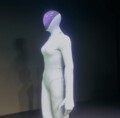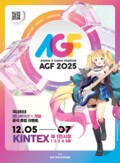Elon Musk’s artificial intelligence startup xAI is escalating the race in next-generation video generation. Its flagship model, Grok, has received a sweeping update—transforming Grok Imagine from a simple image generator into a powerful platform for lifelike human video creation.
Released on Nov. 1, the update introduces a redesigned interface and major advances in motion realism, signaling what many see as xAI’s most direct challenge yet to OpenAI’s Sora 2.

A New Interface Built for Video Creation
The most visible overhaul comes from the user interface.
Previously, image generation and video conversion lived in separate menus. The new layout places the image-to-video button at the top center, making it far easier to access. Favorites, download, and share buttons have been shifted to the left for a cleaner workflow.
A refreshed prompt bar—paired with a new Edit Video label—simplifies fine-tuning, while the disappearance of the progress bar makes the experience feel more seamless and immediate.
The cinematic quality Grok Imagine is pushing right now is wild. pic.twitter.com/fv2PwzK4sn
— DogeDesigner (@cb_doge) November 13, 2025
Lifelike Motion: Capturing the Imperfections of Reality
The core of the upgrade lies in what Grok Imagine can now feel like.
The model reproduces low-light indoor conditions, natural hand shake, subtle hair movement in the wind, and even flickering light—details drawn from the imperfect physics of real cameras.
Users report that the results are “nearly indistinguishable from real footage,” with generation time averaging 10 to 15 seconds after entering a prompt.
This leap in realism positions Grok as a formidable contender alongside Sora 2, which has been praised for its cinematic, high-resolution visuals. While Sora excels in film-like scenes, Grok is carving out a niche rooted in everyday smartphone-style video—spontaneous, intimate, and social-media ready.
A Two-Horse Race in Video AI
With this update, the competition in video AI is crystallizing into a two-player showdown: Grok vs. Sora 2.
Where OpenAI focuses on polished, high-budget aesthetics, xAI is betting on authenticity—short-form clips that look like they were captured by a real person on a real device.
The shift underscores Musk’s broader ambition to transform Grok into “more than a chatbot”—a fully automated content creation platform designed for mass adoption across social media and digital storytelling.
A Coming Shift in the Creative Economy
The implications extend far beyond technical improvements.
For short-form creators, Grok Imagine could deliver emotionally rich, realistic videos without expensive gear. For marketers, it offers the ability to produce hyper-real ads without professional models or lengthy shoots. And for the fast-growing virtual influencer economy, the barrier to entry continues to fall as AI-generated characters become ever more convincing.
Simply put, Grok is lowering the cost of realism.
Realism Brings Risks: Ethics and Copyright Under Scrutiny
But as AI-generated videos grow more lifelike, so do the risks.
Experts warn that ultra-realistic outputs may intensify concerns around deepfakes, identity theft, misinformation, and copyright. If AI videos are mistaken for genuine recordings, the stakes could be profound.
Musk has stressed on X that “generated content must remain transparent,” and xAI is reviewing safeguards such as watermarking, content provenance tracking, and stricter user verification.
Ju-Baek Shinㅣjbshin@kmjournal.net
- Tesla Isn’t Just Building Cars...It’s Engineering an AI Empire Aimed at Earth and Beyond
- AI Videos That ‘Move Like 3D’: Musk’s xAI Ignites the Next Video AI War
- OpenAI to Allow Adult Conversations on ChatGPT from December
- Grok 4.1 Topped Every Benchmark in Emotional Intelligence, Creativity, and Accuracy. Hours Later, Gemini 3 Took the Crown

![[동학] 카카오톡 친구탭, 결국 12월 롤백… “격자형 피드는 선택 옵션으로”](https://cdn.kmjournal.net/news/thumbnail/custom/20251126/5517_10550_1119_1763853080_120.jpg)


![[테크 칼럼] 제미나이3, GPT-5.1을 넘다…AI는 이제 ‘일을 대신하는 시대’로 간다](https://cdn.kmjournal.net/news/thumbnail/custom/20251126/5457_10454_4847_1763621329_120.jpg)





